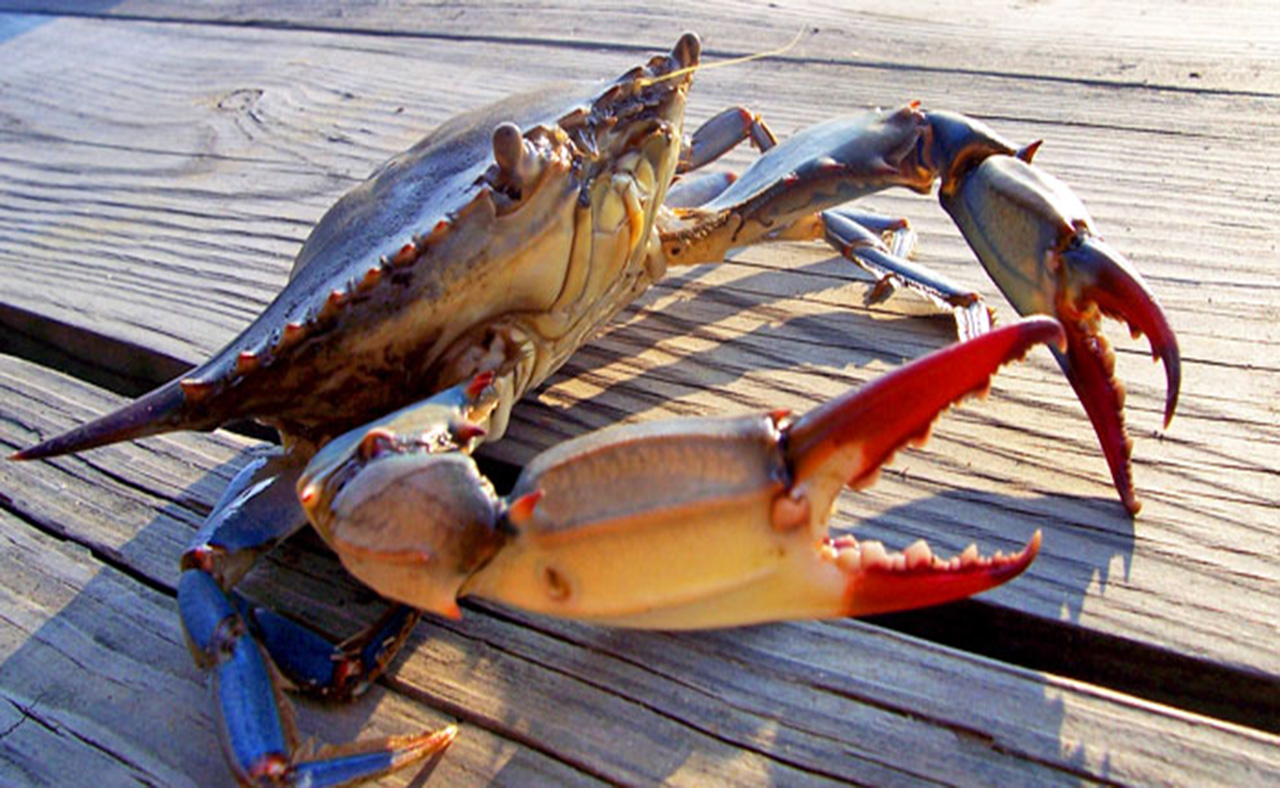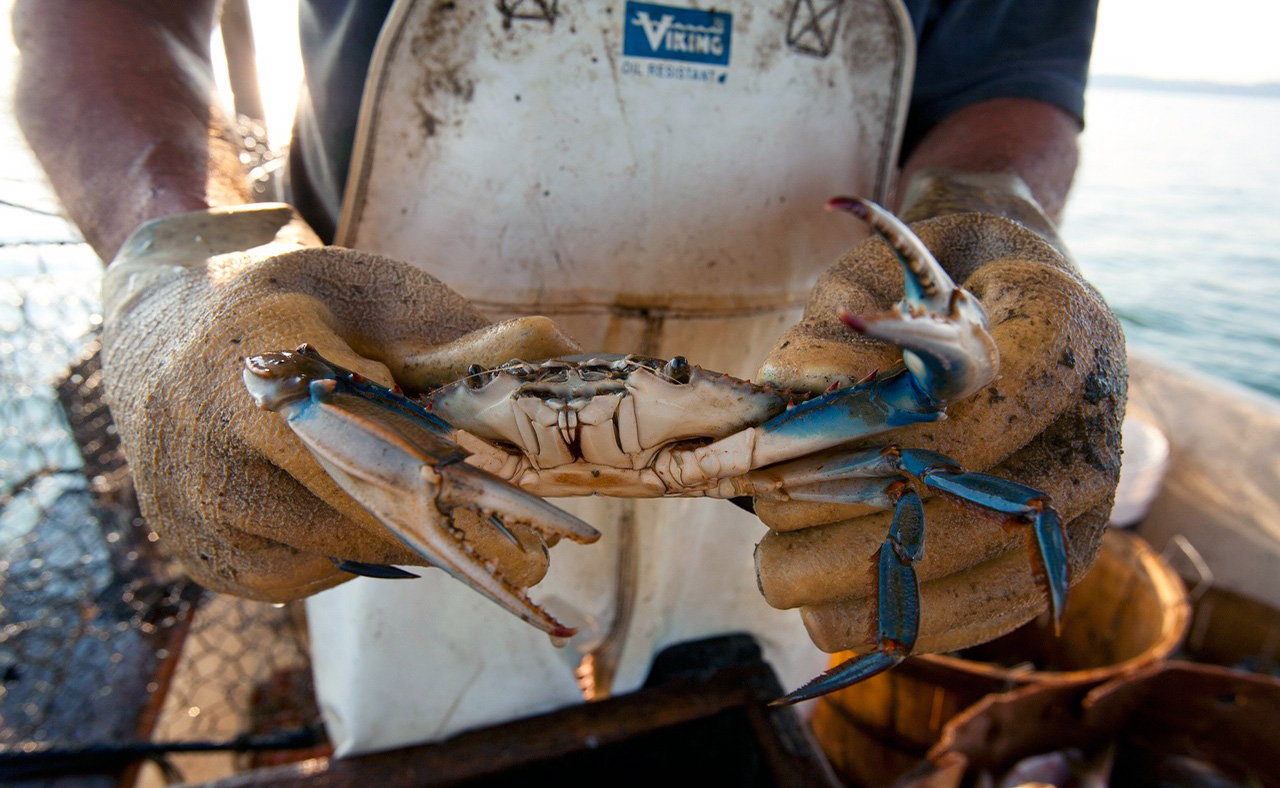Called the beautiful swimmer, the blue crab is Maryland's state crustacean
The Chesapeake Bay’s blue crab is one of the most recognizable critters in the watershed, and supports commercial and recreational fisheries. In the Bay's ecosystem, they are both predator and prey. But blue crabs are vulnerable to pollution, habitat loss, and harvest pressure, and their abundance has fluctuated over time.

Blue crabs are good indicators of Bay health because they live in many different parts of the Bay during their lifetime. Source: Chesapeake Bay Foundation.

The blue crab fishery in the Bay is approximately 93% commercial and 7% recreational. Source: US Department of Agriculture.

For blue crabs, the adult female, shown here with eggs attached to her abdomen, is important to maintain the population. Source: Joe Reynolds.
- 2013
- 2012
- 2011
- 2010
- 2009
- 2008
- 2007
- 2006
- 2005
- 2004
- 2003
- 2002
- 2001
- 2000
- 1999
- 1998
- 1997
- 1996
- 1995
- 1994
- 1993
- 1992
- 1991
- 1990
- 1989
- 1988
- 1987
- 1986
No story for this year